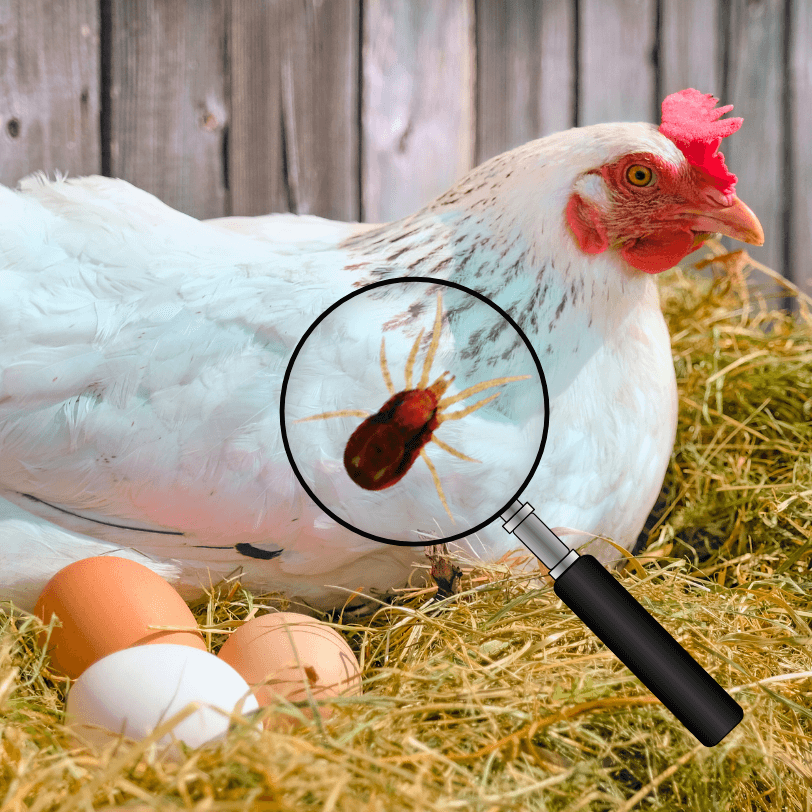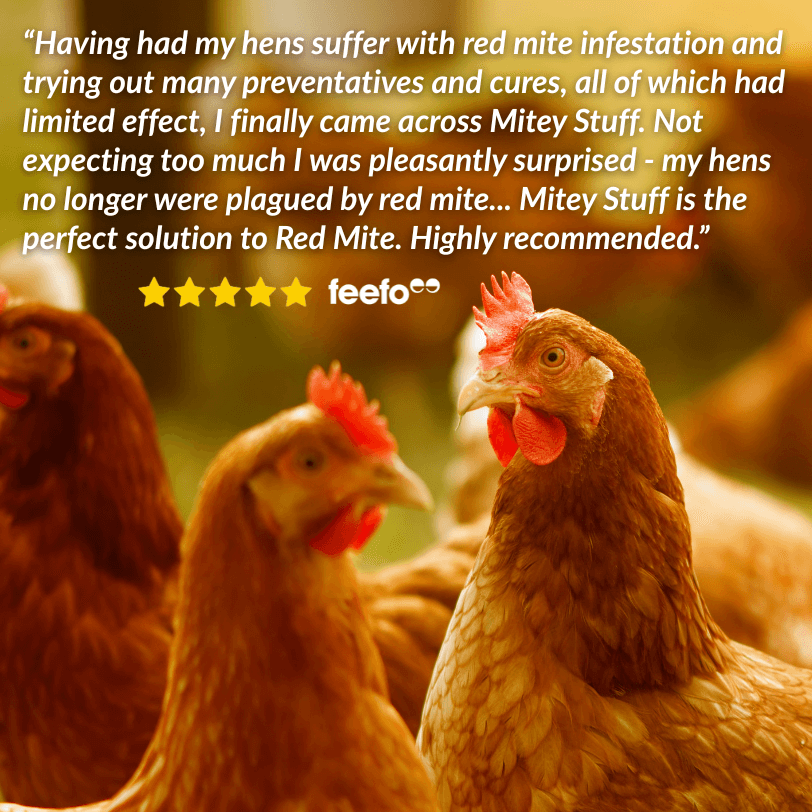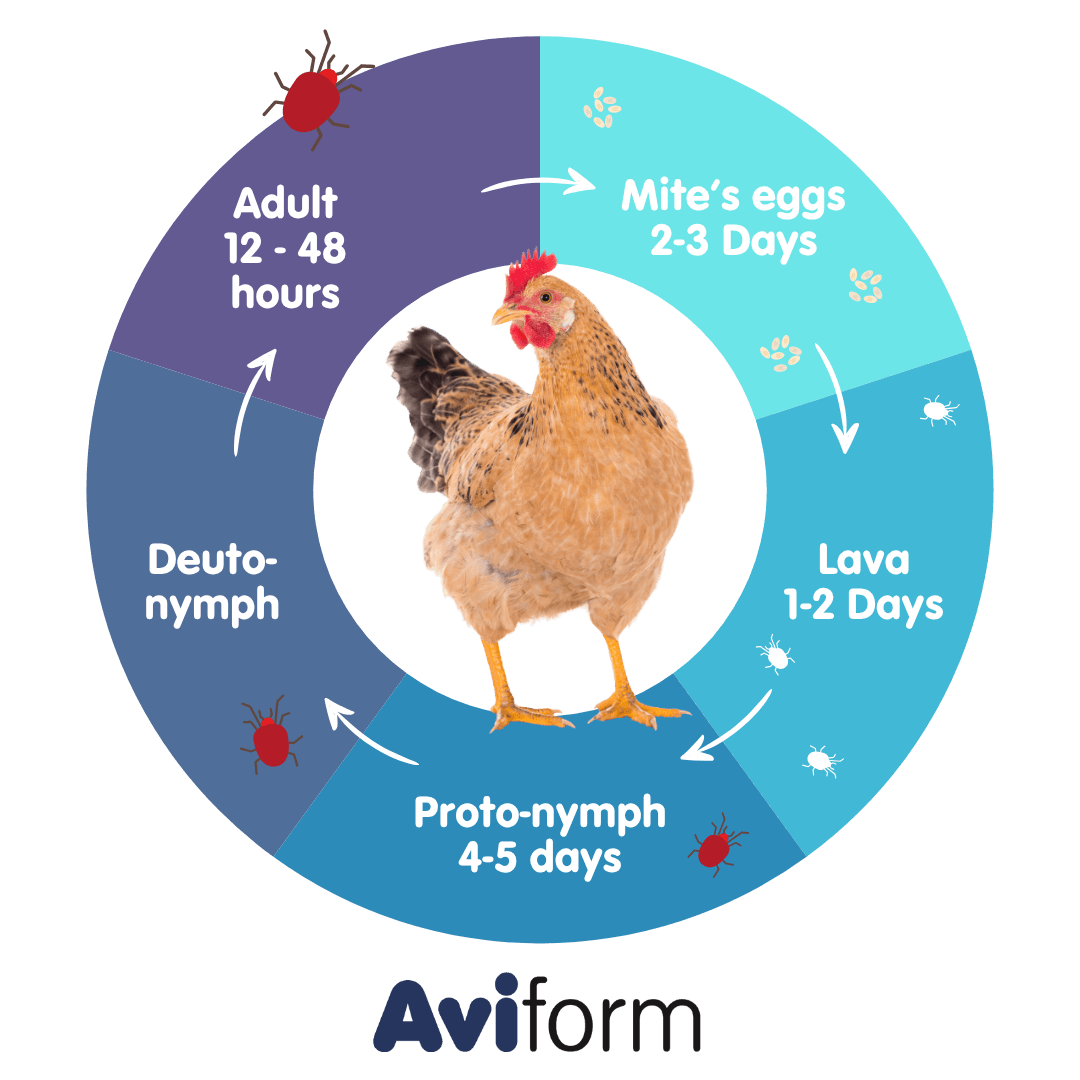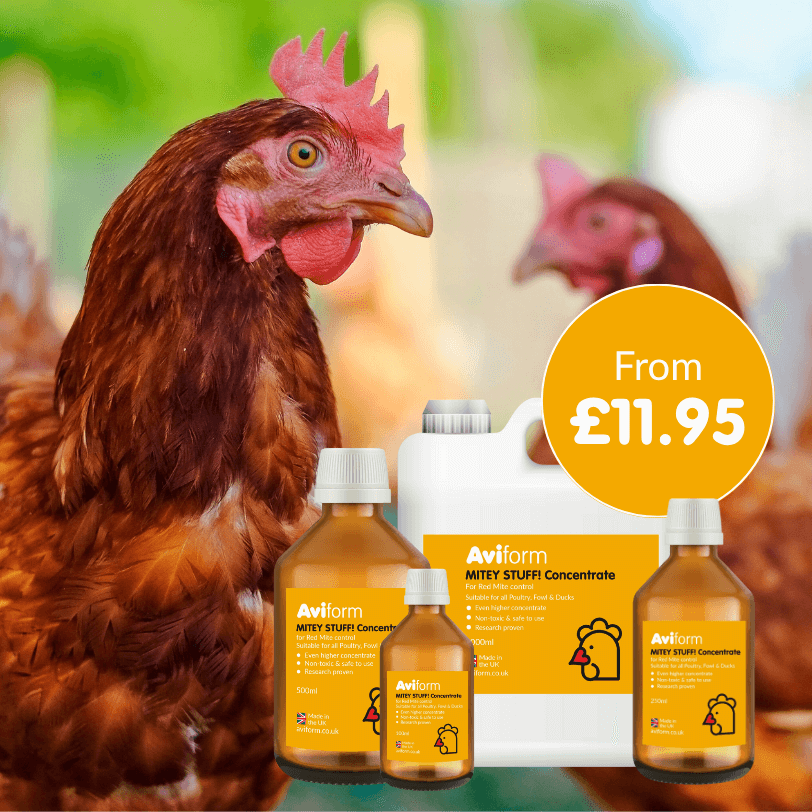
How To Prevent The Seasonal Spread of Red Mites
What they are and why they become a problem in warmer months
As temperatures rise, so does the risk of your hen house or chicken coop becoming infested with blood sucking red mites. Fortunately, there are effective ways to prevent the seasonal spread.
Red mites are among the most troublesome pests for poultry keepers, especially during the warm summer months when infestations peak. As they are nocturnal, you may not have ever seen them. By day, they hide in the cracks and crevices of the coop, only emerging at night to feed on your birds’ blood. After feeding, they return to their hiding places to digest the blood and reproduce.
Under ideal conditions, a single mite can go from hatching to laying hundreds of eggs of its own in just one week, allowing populations to expand and multiply at an alarming rate if not kept under control. To make matters worse, adult mites can survive for months in a
dormant state without feeding, and their eggs can remain dormant for just as long without hatching.
Why Are Red Mites Worse in Warm Weather?
Whilst all year-round monitoring is essential, the summer months see the temperature rise, which accelerates the lifecycle of a red mite. Increased temperatures also allow for nighttime feeding and daytime hiding, so infestations might go unnoticed. On the other hand, sometimes too extreme conditions, over 40 degrees, may be harmful for red spider mites, especially after a long period of time.
How Do I Know If My Chickens Have Red Mites?
There are a few signs that your chicken might have red mites without seeing them directly. You might spot that they have reduced egg production, so you will collect fewer eggs than normal. Listen out as they might be restless at night, as many of the mites might return during the cooler evenings to feed and distress your flock. The hen’s combs and wattles might be paler than usual, which are located at the top of their heads and below their beaks and keep them cool in summer. You also might notice visible mites on your poultry or specks around their perching areas.
Red mite can cause:
- Agitation and stress
- Poor egg quality through shell thinning and blood-spotting
- Decreased egg production
- Spread of poultry pathogens of bacterial and viral origin
- Impaired breeding
- Pecking
The Solution
Luckily, there is a simple and effective solution to this common and disruptive issue. The key to eliminating red mites is making your birds and their coop less attractive to these pests from the start. One of the easiest and most reliable methods is to add a natural supplement to your bird’s drinking water, such as Aviform’s new MITEY STUFF!.
This 100% natural, nontoxic liquid supplement is suitable for all poultry, fowl, and ducks. Developed by Aviform, trusted experts in avian healthcare since 1977, MITEY STUFF! works from the inside out. Simply add it to your birds’ drinking water, and it helps them repel ectoparasites, including red mite spiders, when they emerge to feed at night. By reducing the appeal of your birds to parasites, you can help stop red mites in their tracks and prevent their seasonal spread.
Formulated through careful research, Aviform’s MITEY STUFF! is a preventative treatment designed to help protect your birds from red mites and other external parasites. Based on aromatics, it contains a unique blend of plants, herbs, spices and essential oils, completely free from poisons or harmful chemicals. This means it’s safe for humans and won’t affect your bird’s performance or egg laying.
MITEY STUFF! is just one of many trusted supplements in the Aviform range. With a commitment to premium avian healthcare at affordable prices, Aviform only uses the highest quality ingredients in every product. With over 8,000 5-star service reviews on Feefo, Aviform is a name bird keepers trust for the health and well-being of their flocks.
Year-Round Prevention Strategy
Using a natural supplement like MITEY STUFF! is a great step toward protecting your flock, but a comprehensive, year-round prevention strategy is essential to keep red mites and other parasites at bay. It is important to prepare before spring, deep cleaning and disinfecting all surfaces of the cages, replacing bedding, inspecting for cracks, and checking your chickens’ health. Begin supplementing your birds’ drinking water early in the season to build resistance before infestations take hold. Summer maintenance during peak months is essential, as well as winter checks to prevent dormant eggs. By maintaining a seasonal routine, you’ll significantly reduce the risk of infestation and ensure a healthier, happier flock throughout the year.

FAQs
Do I need to stop eating my chickens’ eggs while they are taking MITEY STUFF!?
No, you don’t! The eggs are perfectly safe to eat while your chickens are taking MITEY STUFF! You can rest assured that your chickens are well-protected, and you can continue enjoying their delicious eggs without any concerns.
Do I need to stop eating my chickens’ eggs while they are taking MITEY STUFF!?
Red Mite Spiders tend to be most active in the hot summer months, using the cooler evenings to feed, mature quicker and reproduce.
Can red mites affect other animals or humans?
Rarely can these chicken mites thrive on another species, as they require an avian host to live their lifecycle. However, they can appear on other animals and humans, which can cause irritation and may bite.
Should I treat or inspect for mites in winter too?
It’s important to always check the health of your poultry and their environment. Being extra vigilant in the winter ensures no nests or debris provide shelter for overwintering mites and can keep your birds stress-free during winter and all year round.




